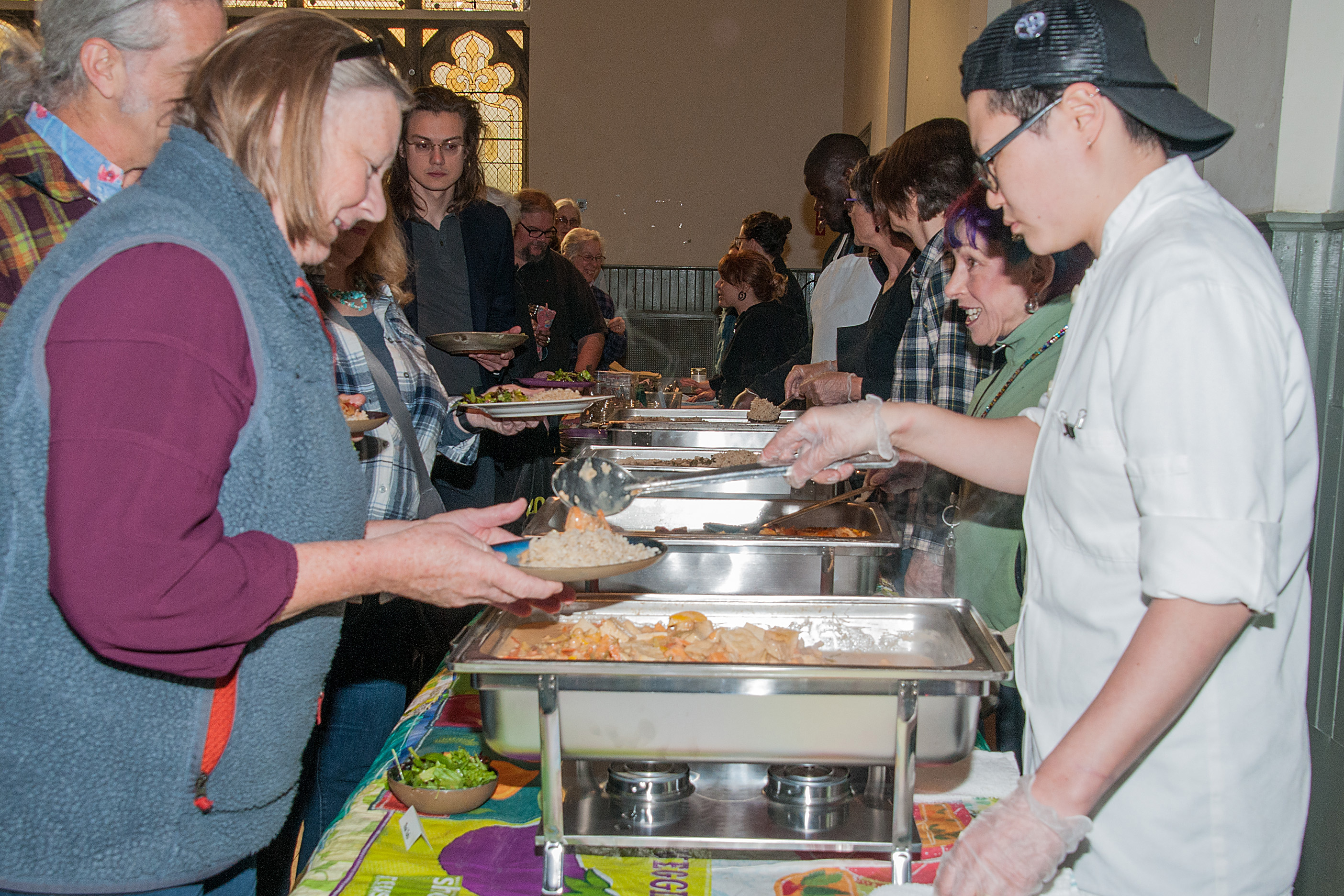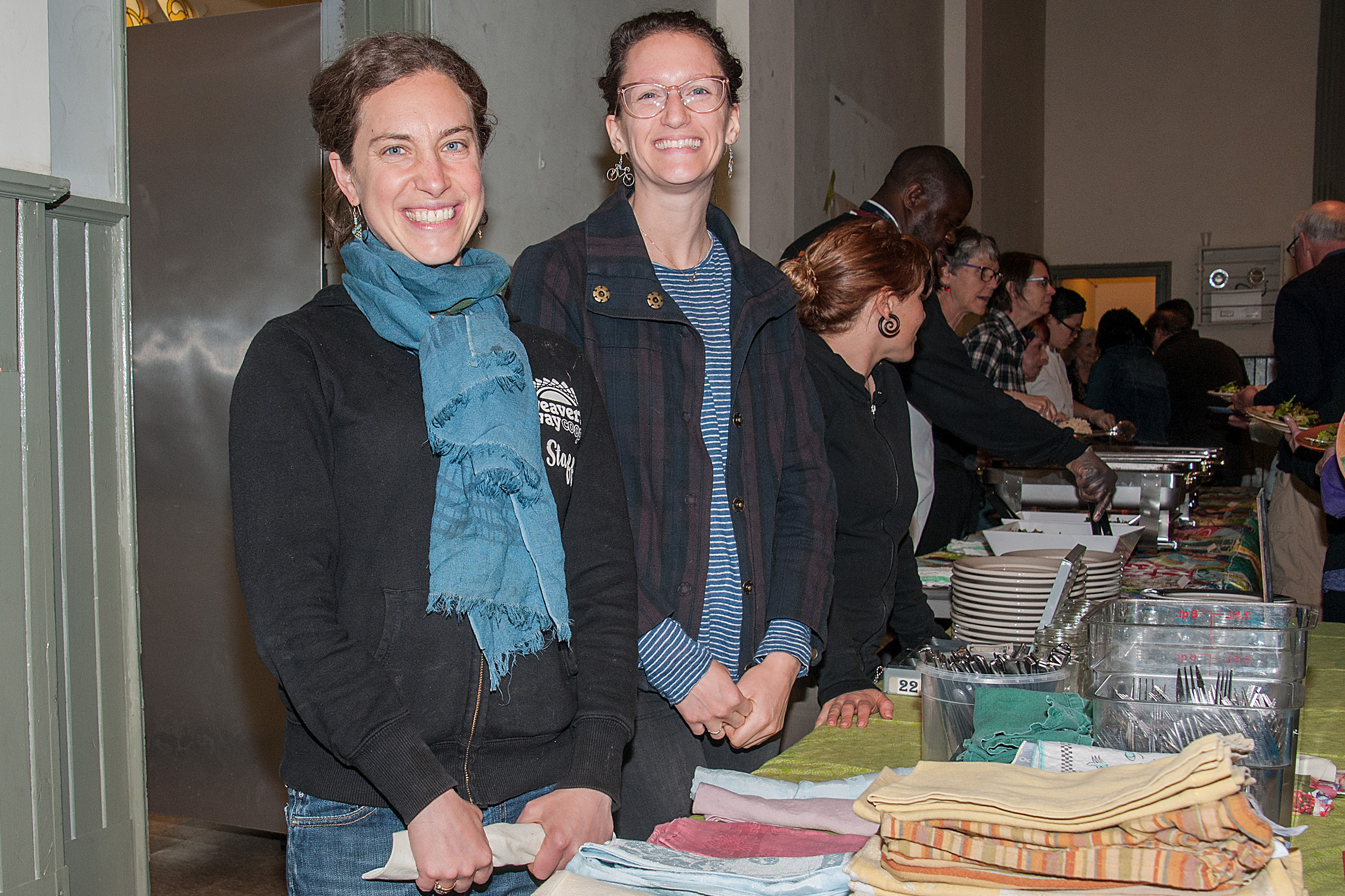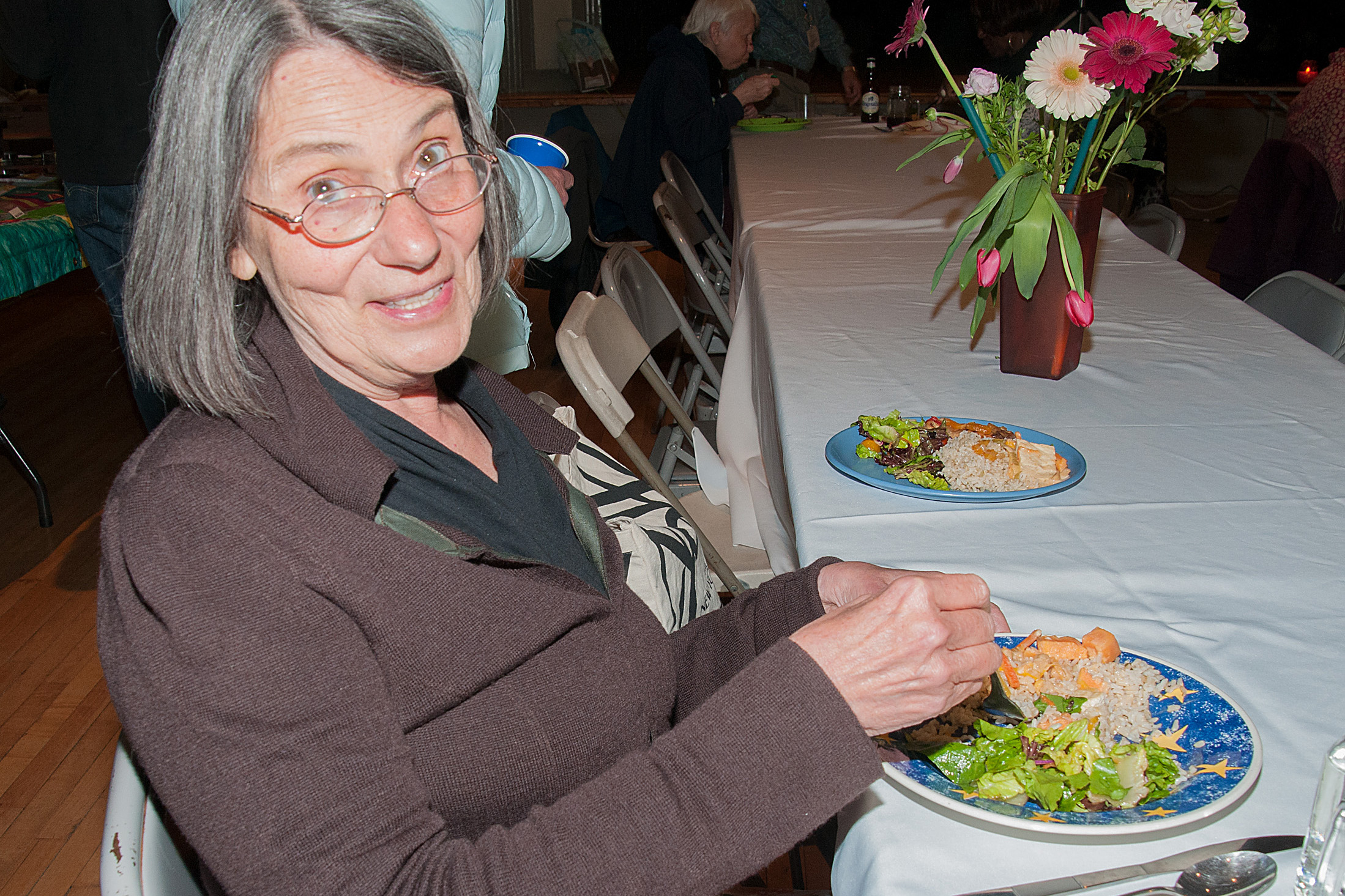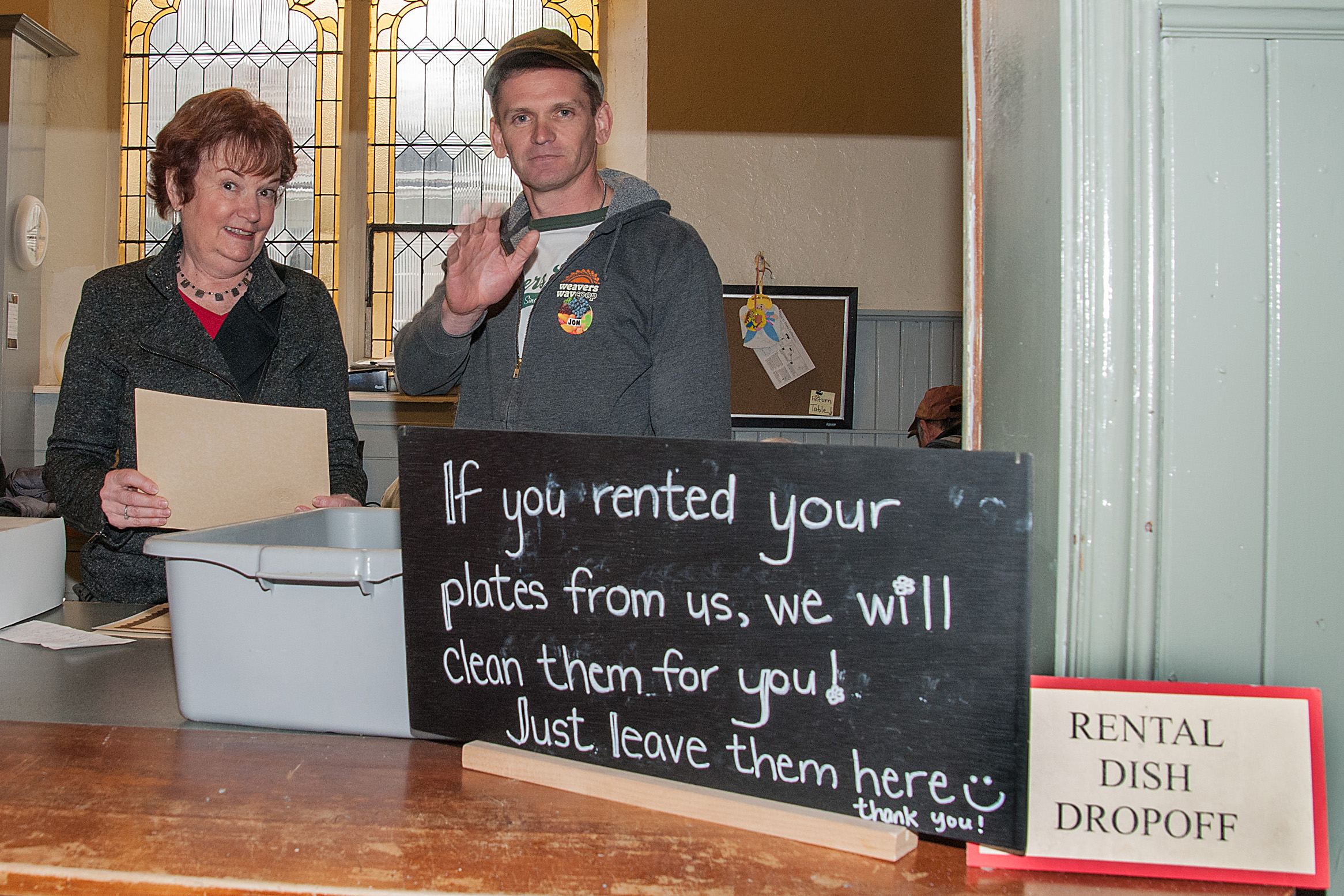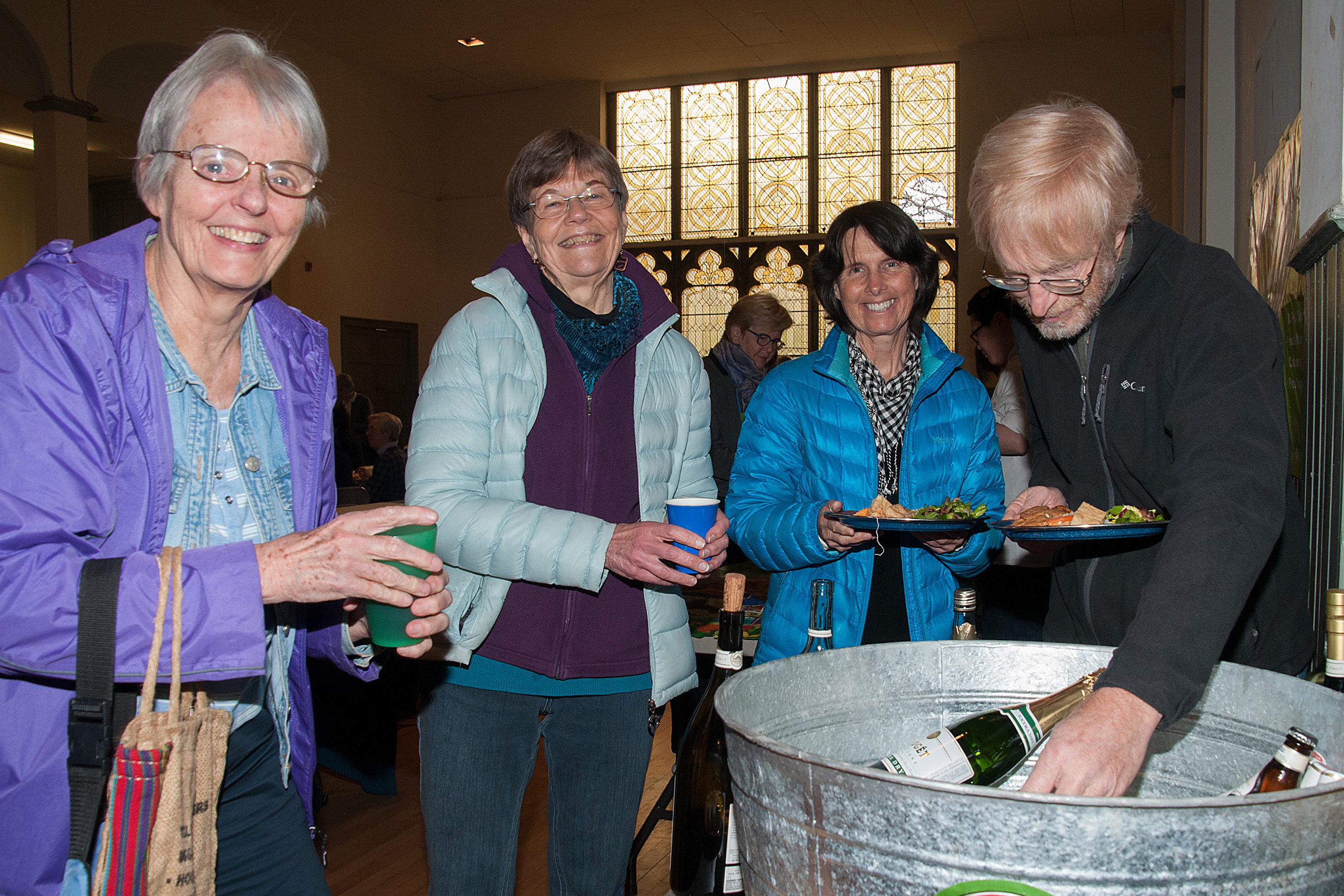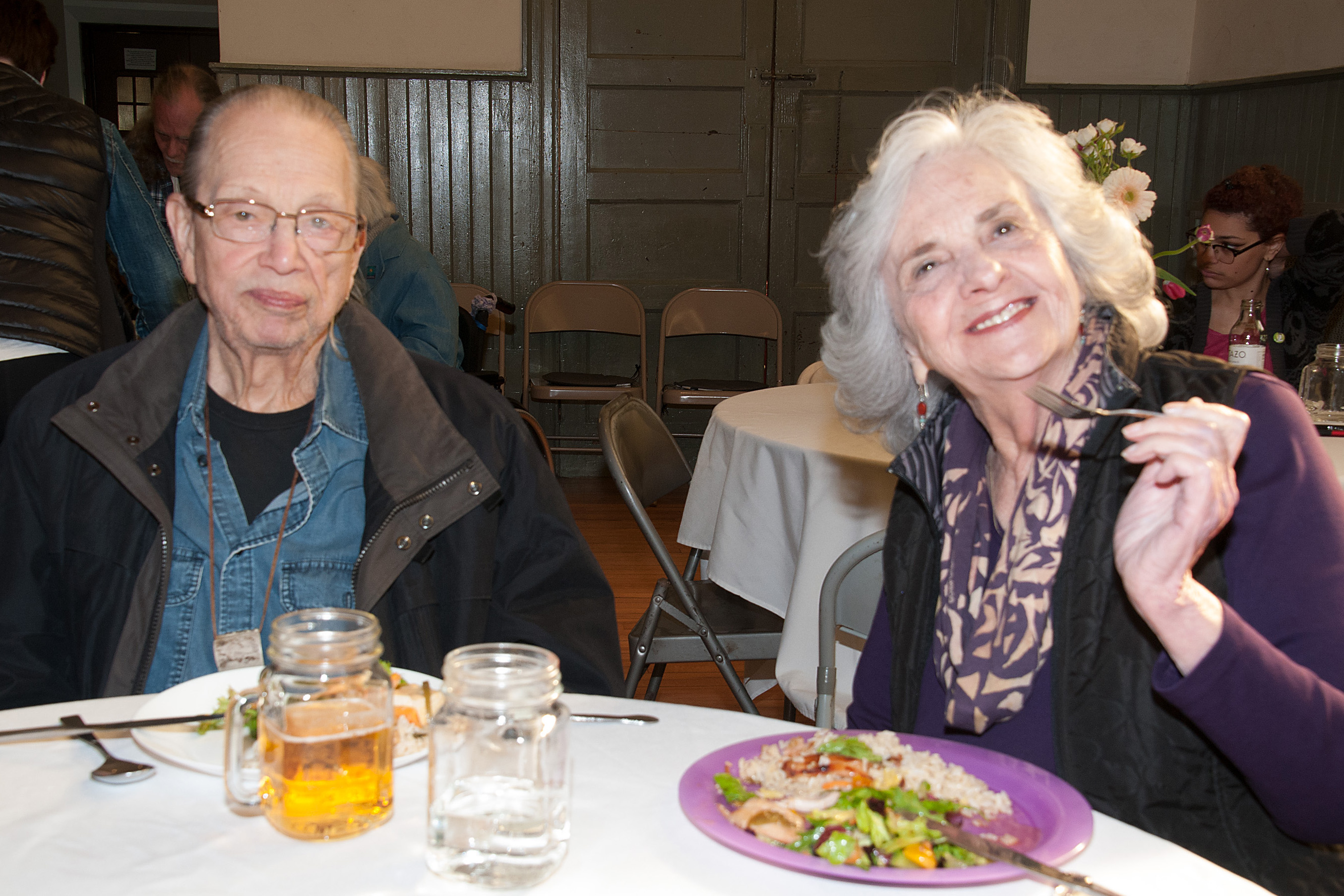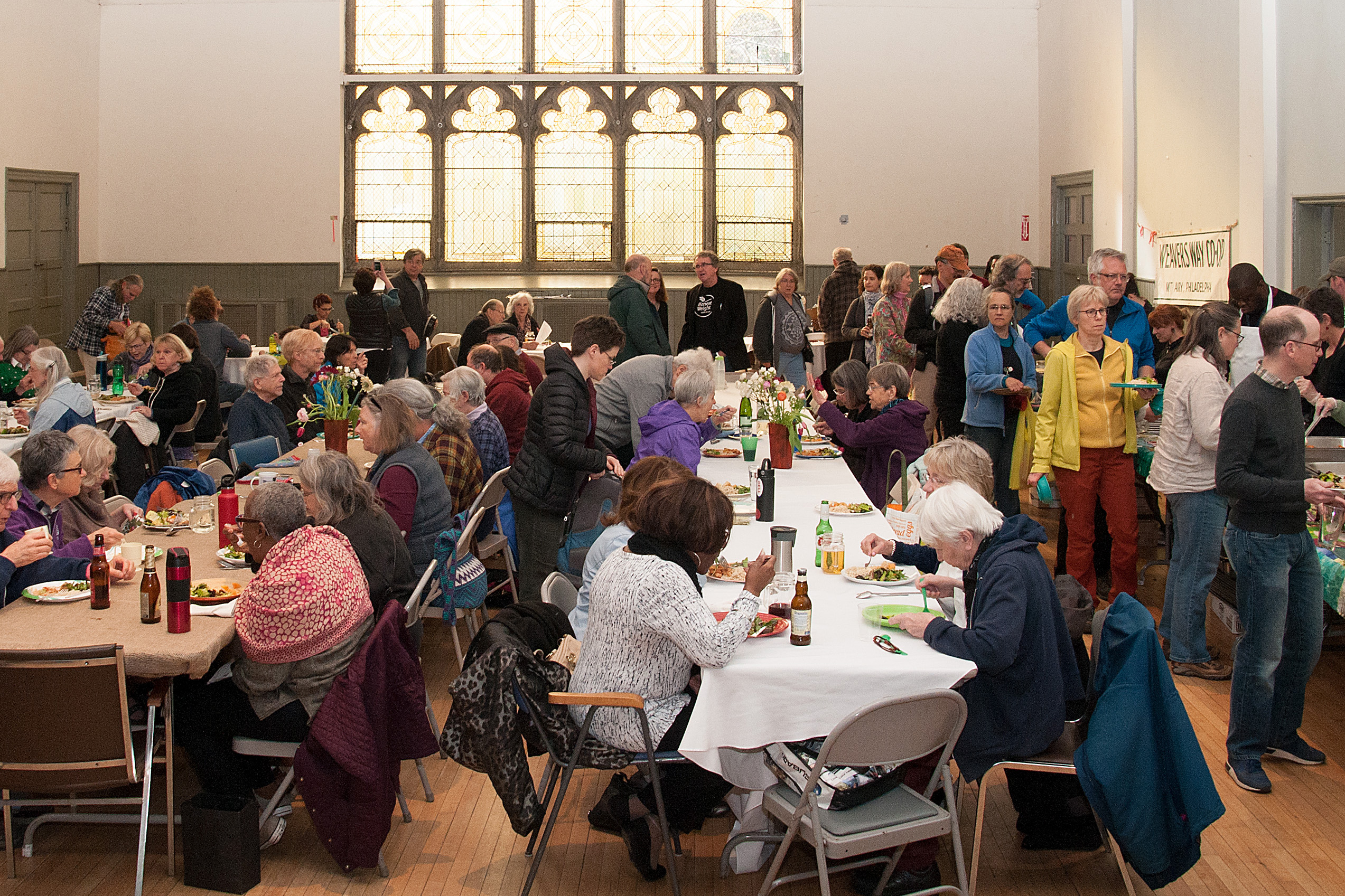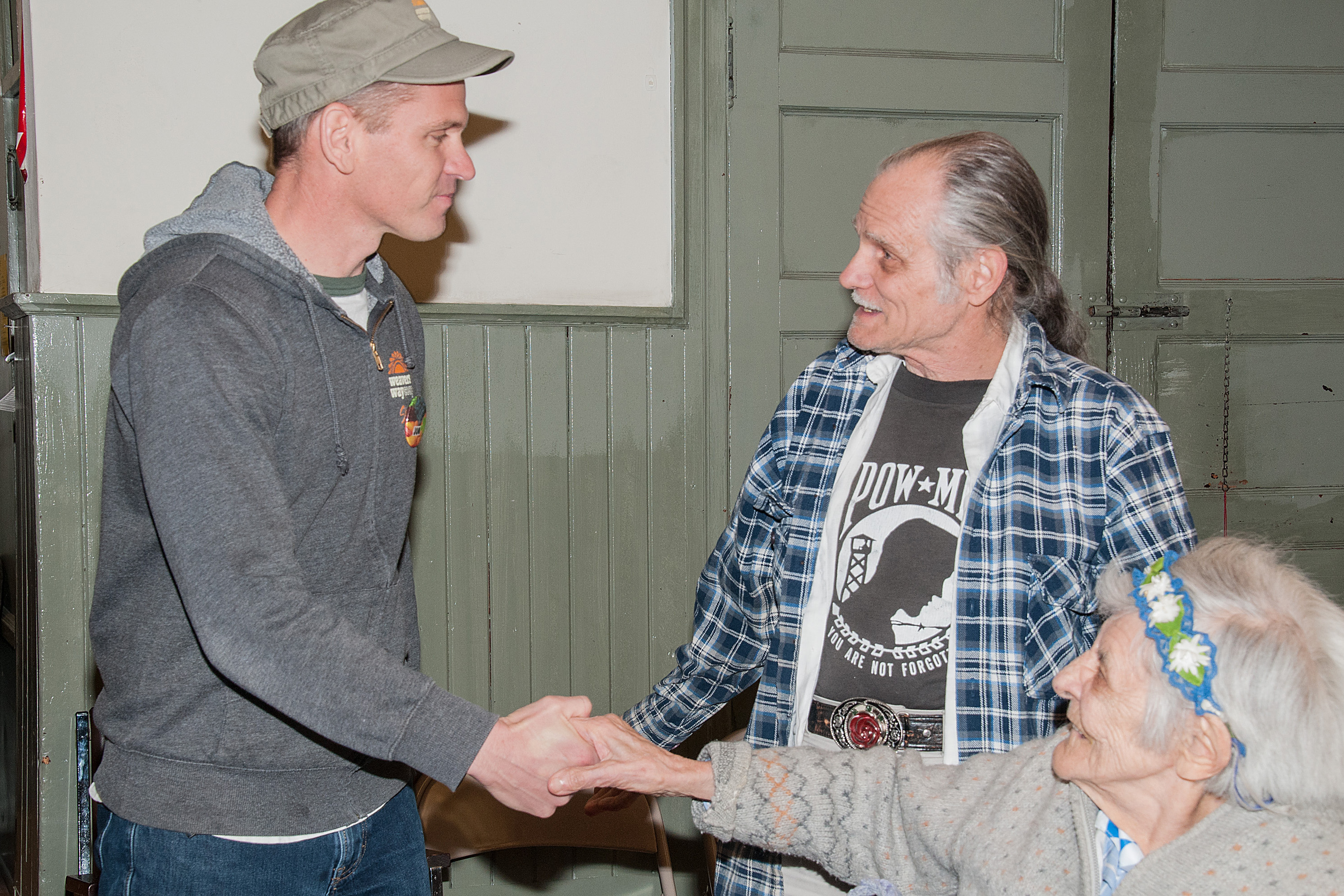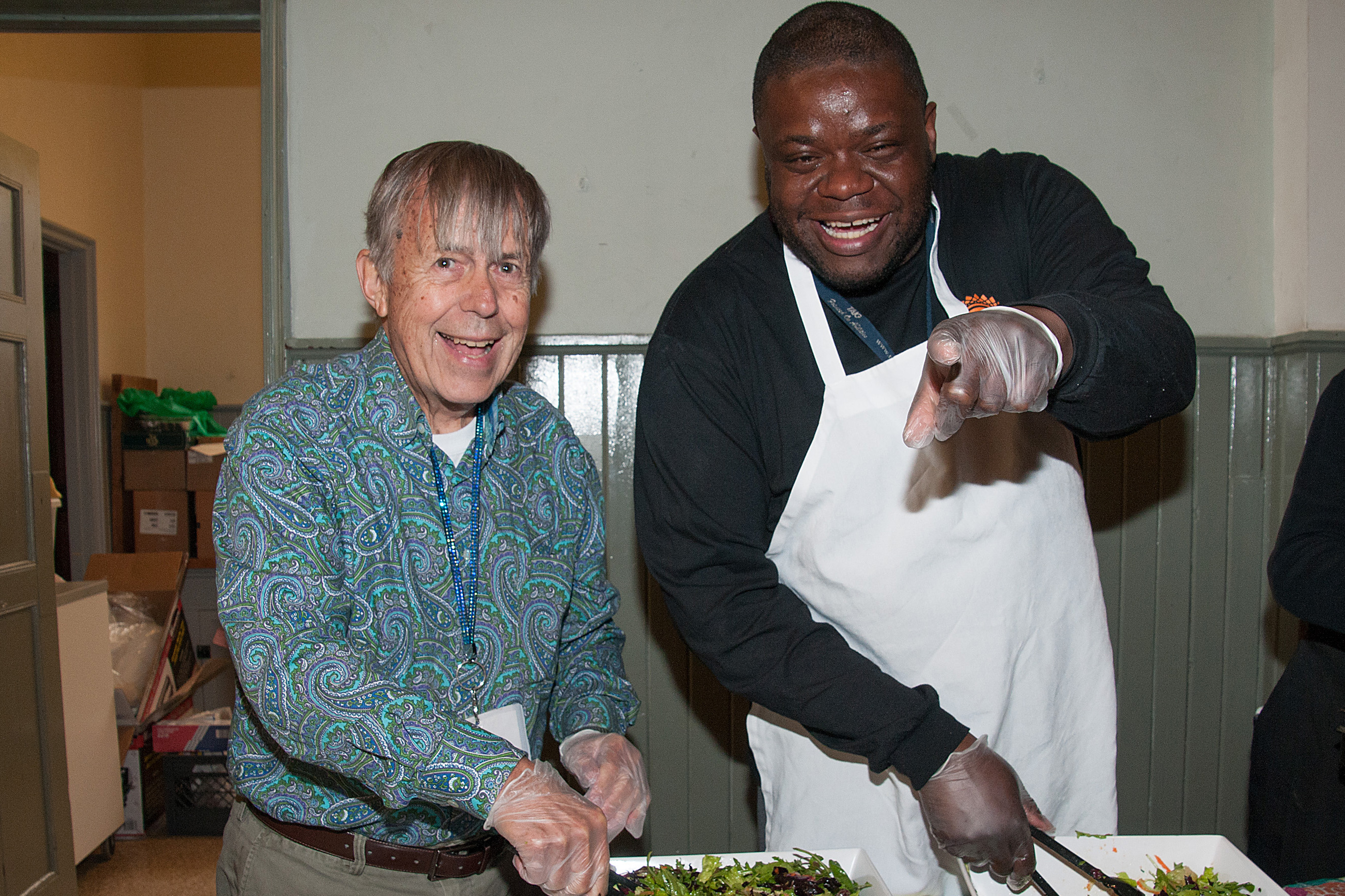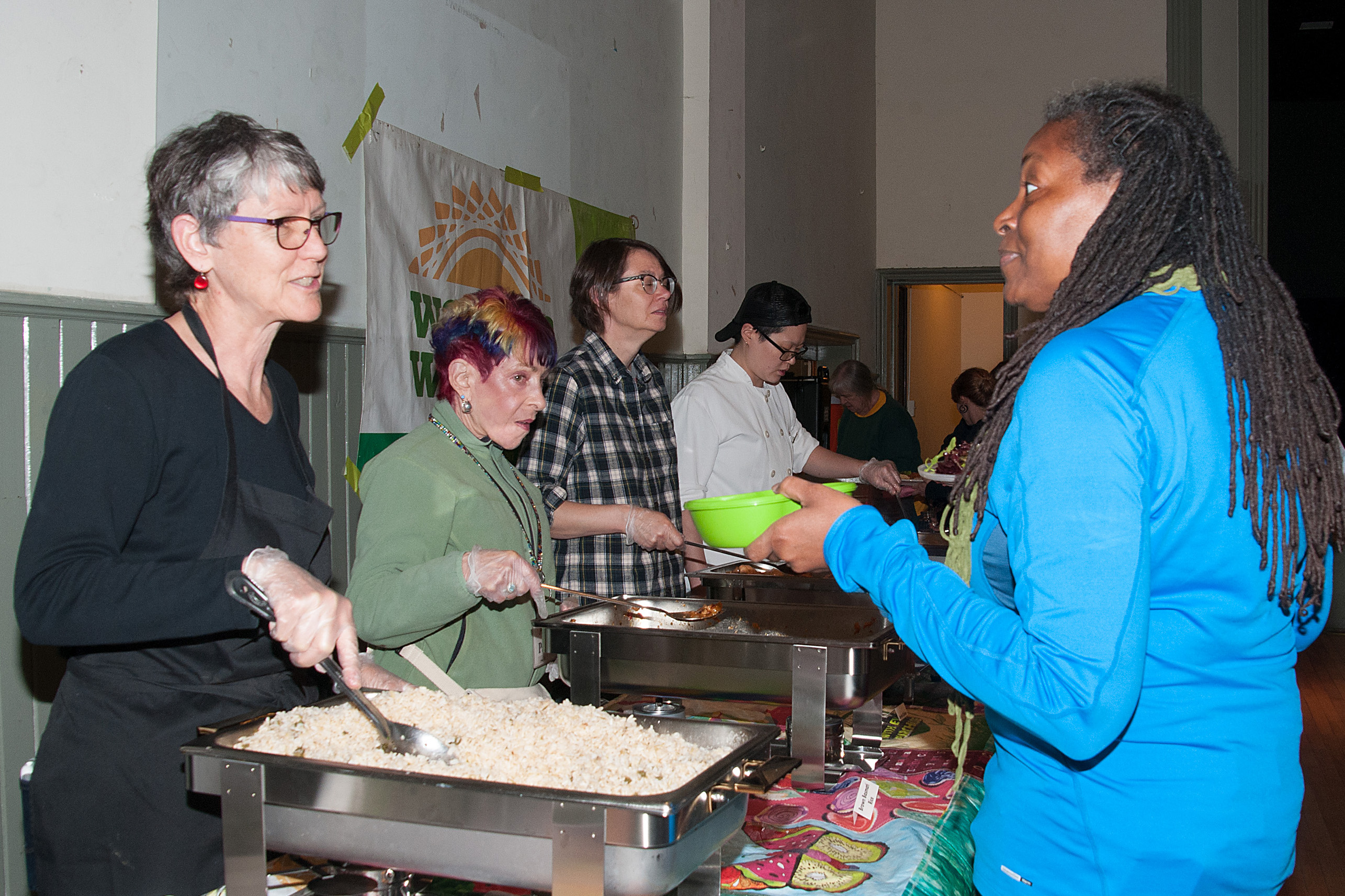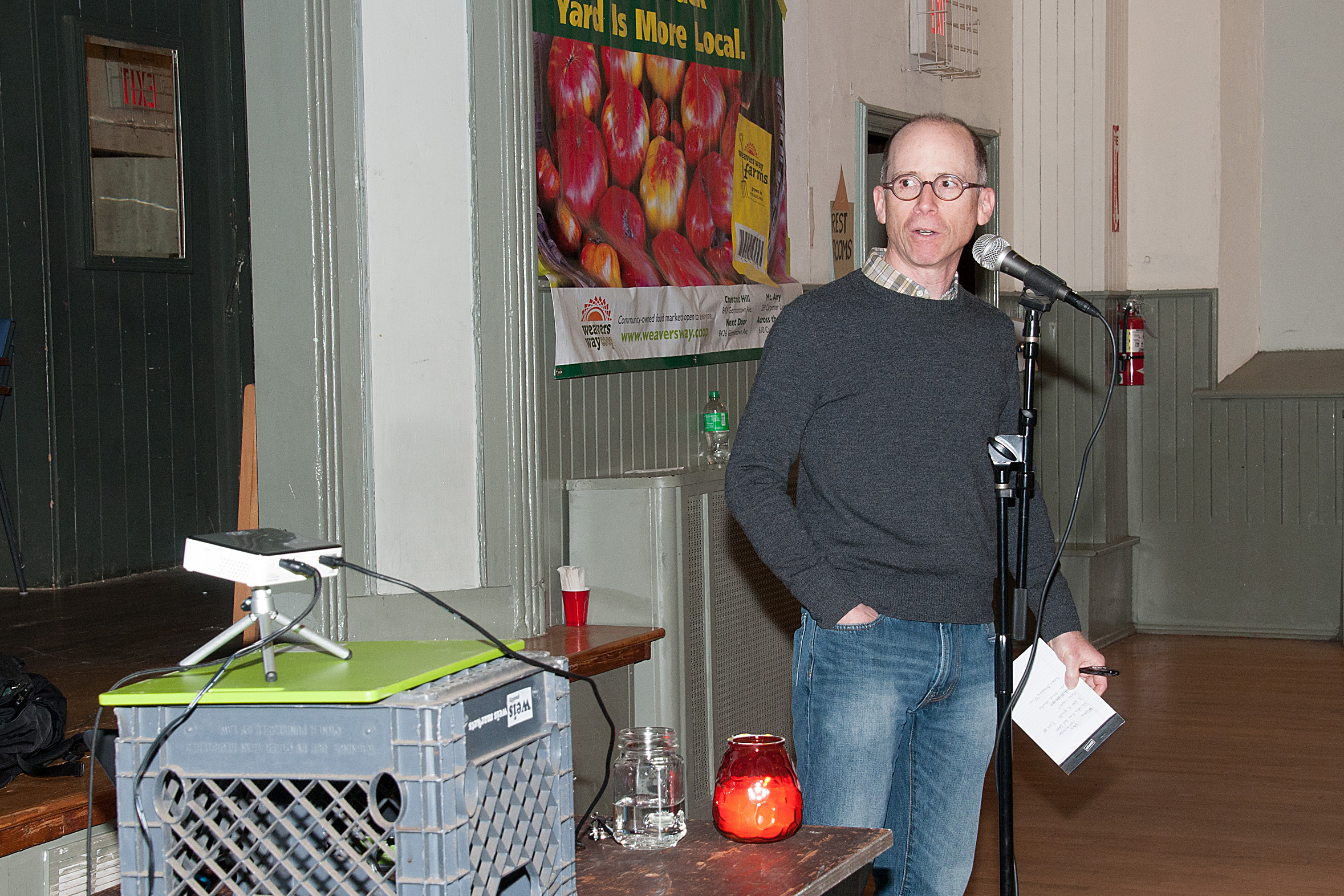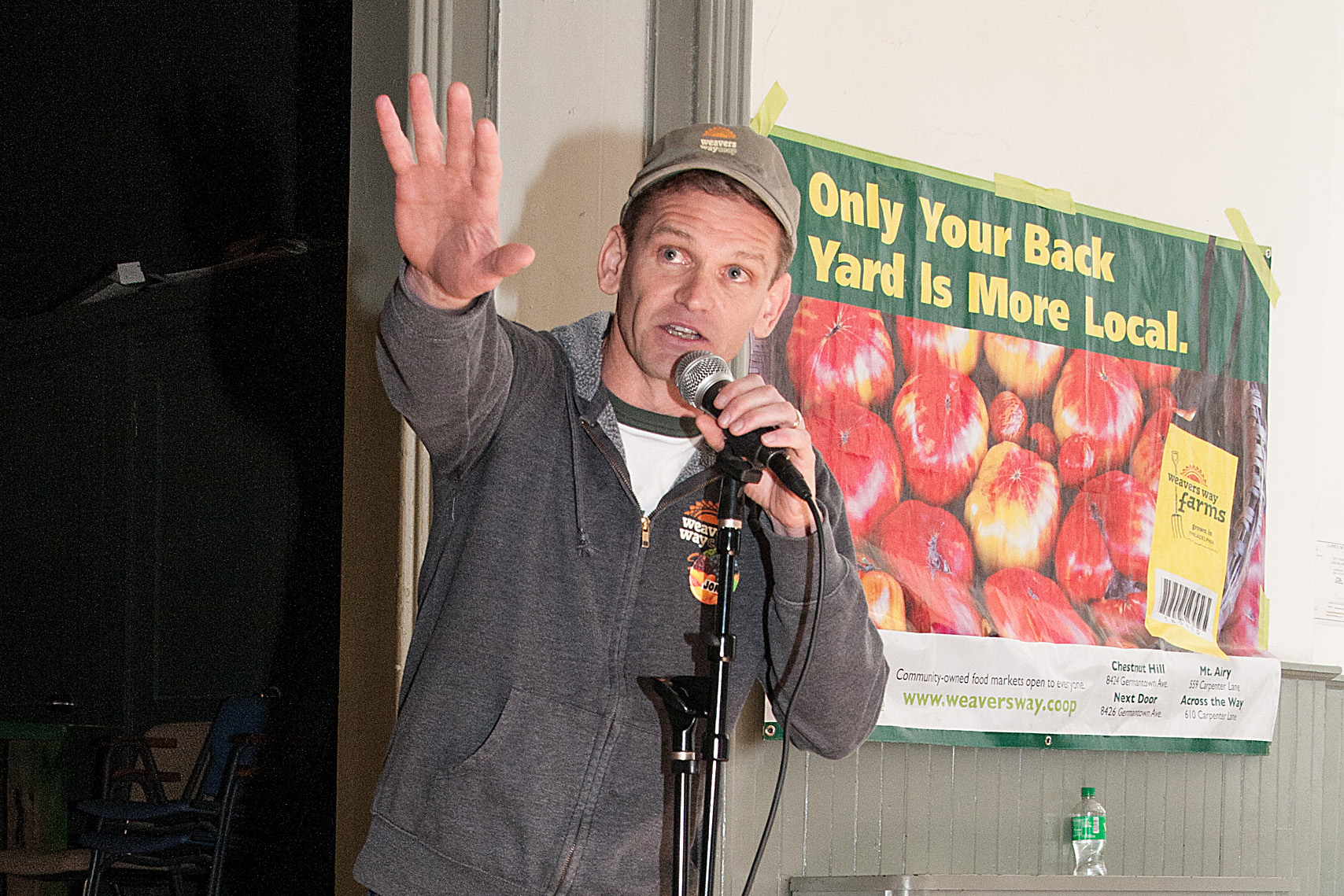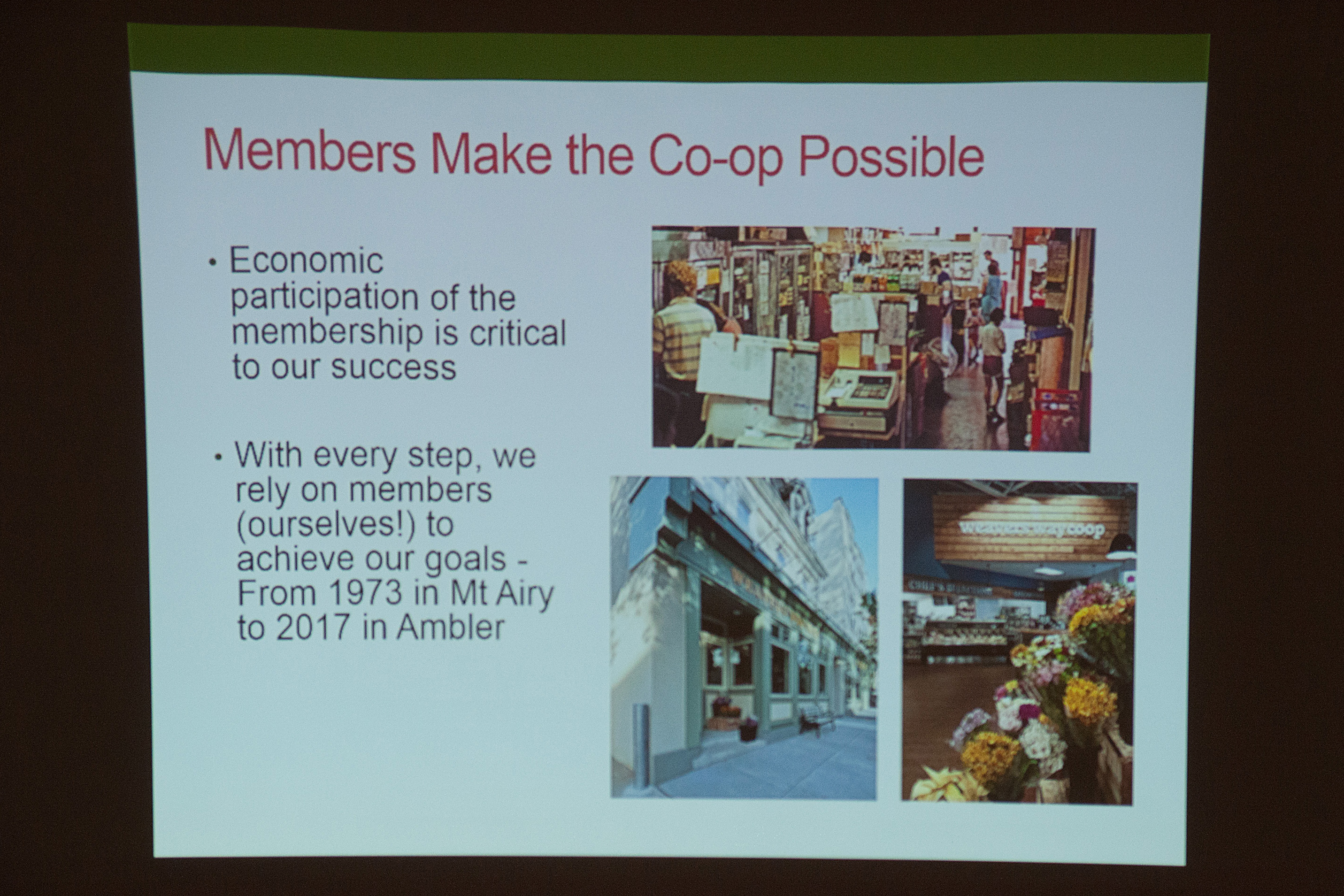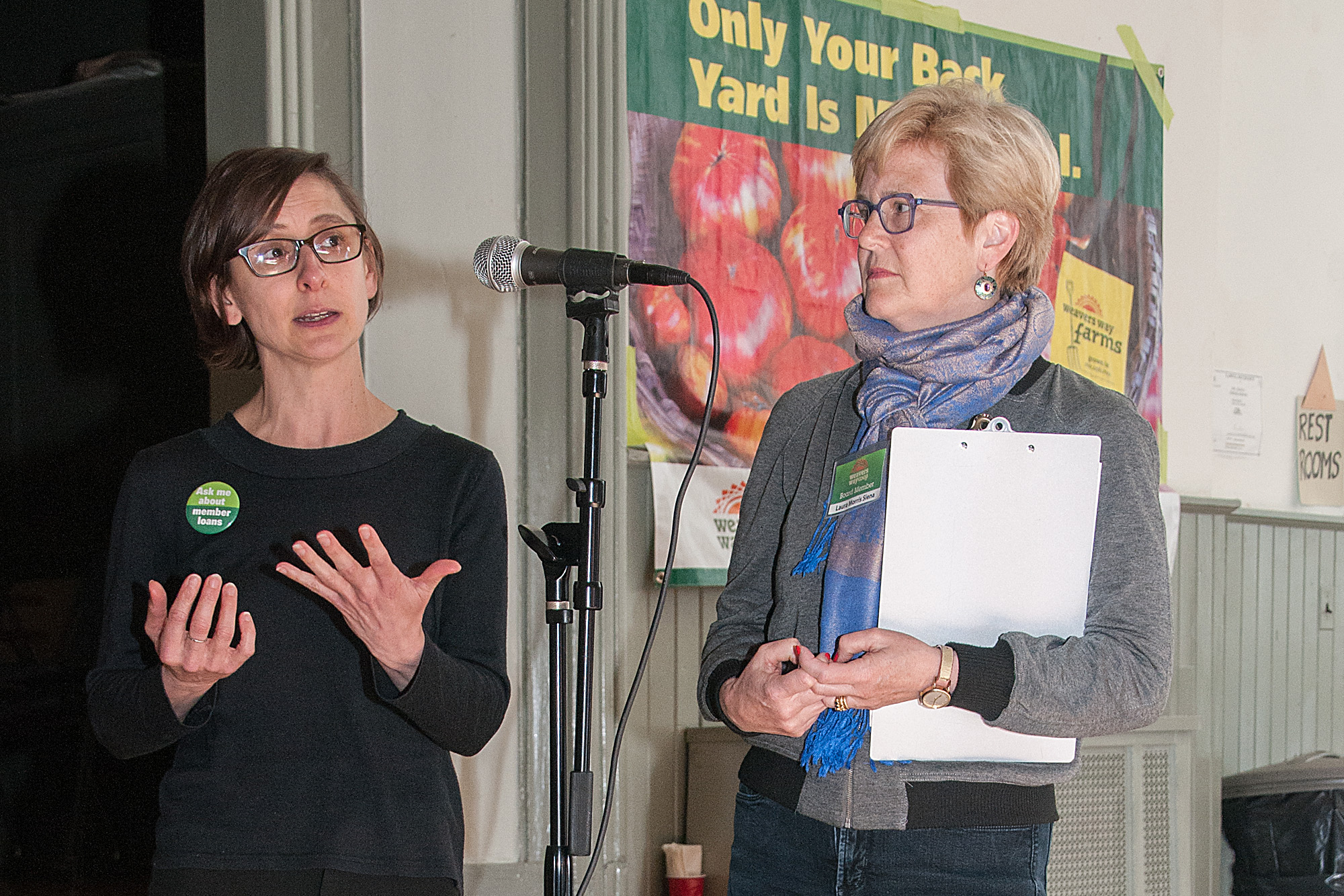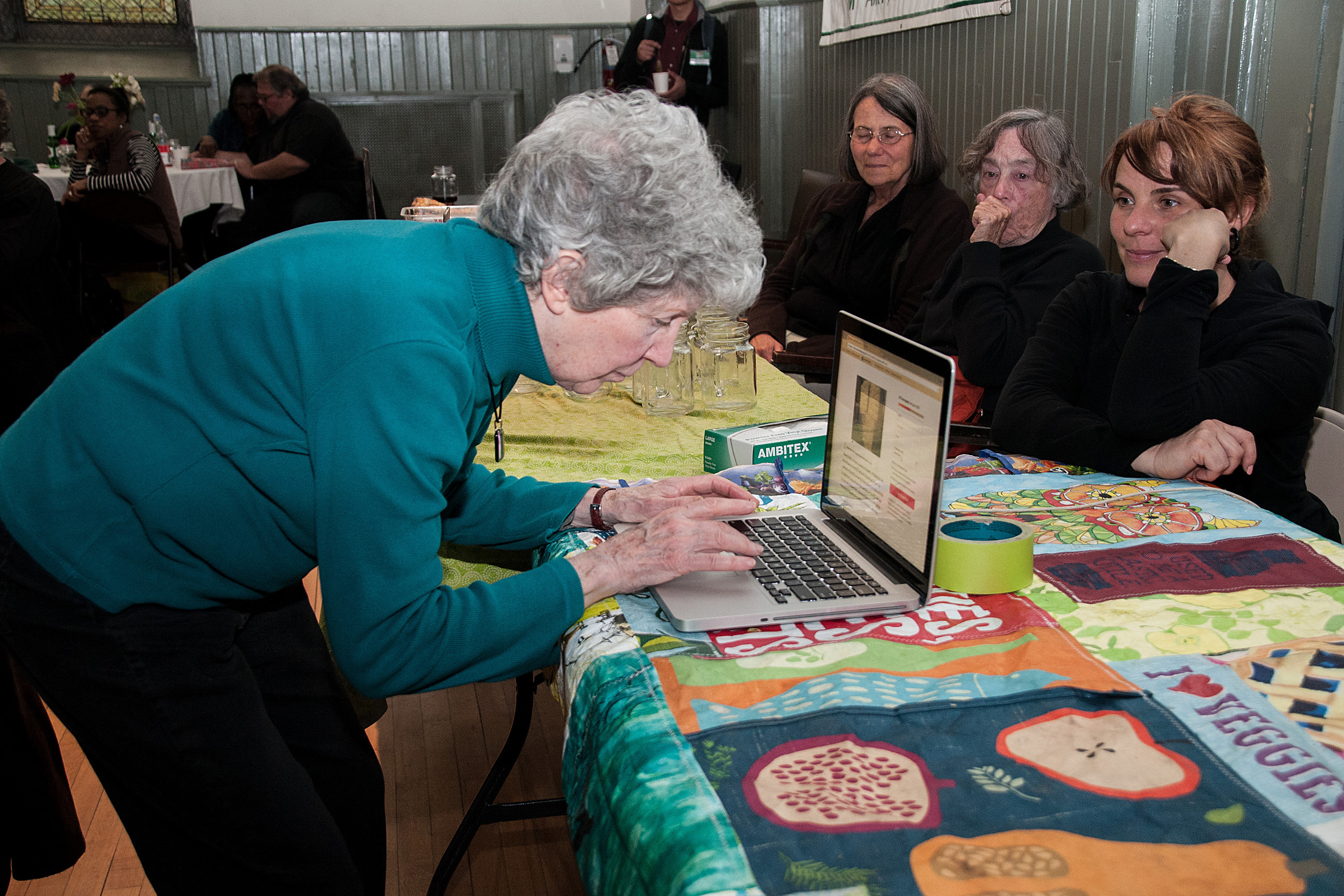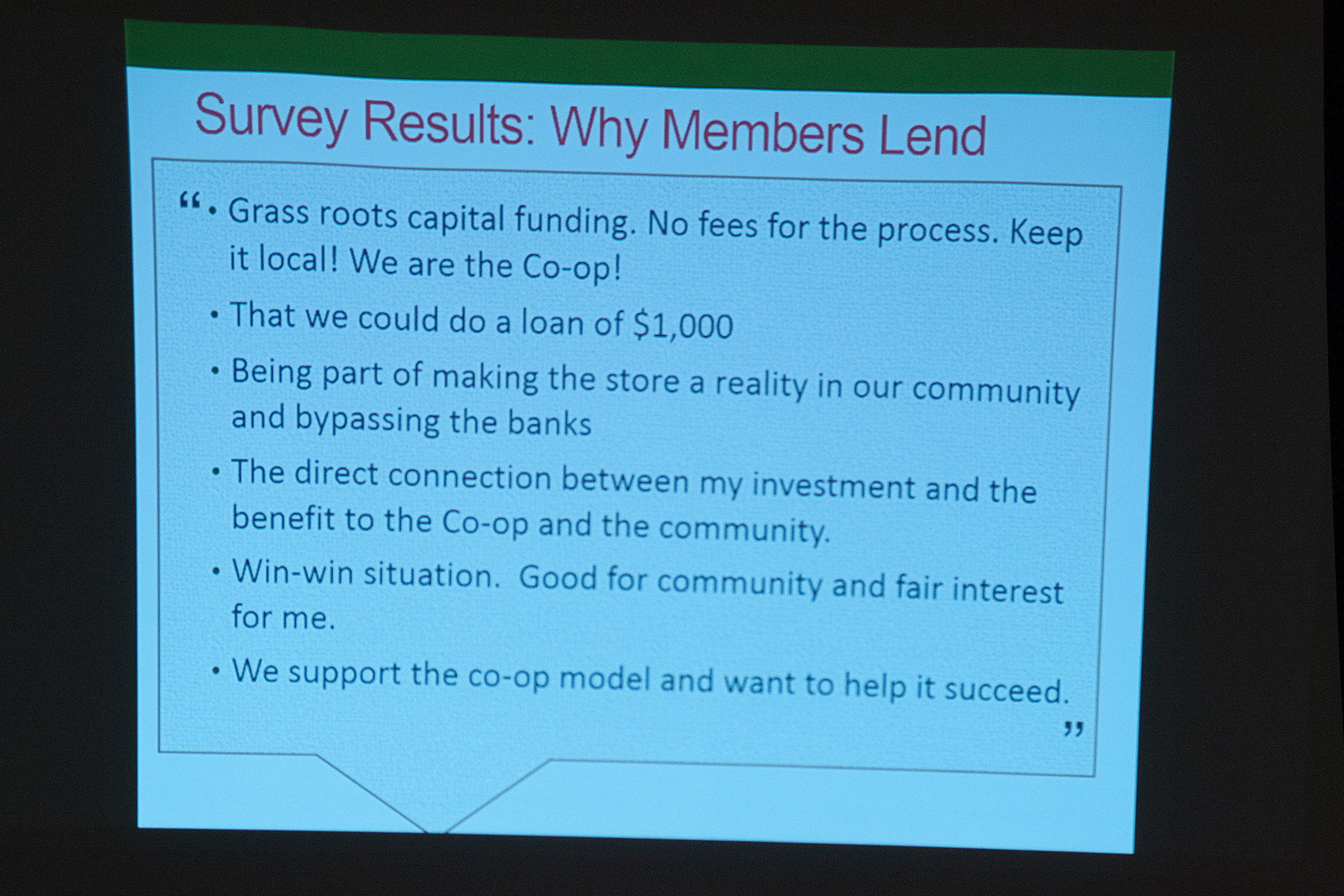Ripple Effects Of Growth Dominate GMM Discussion
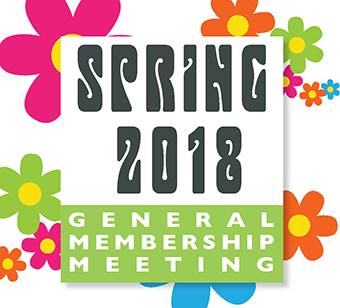 See below for more GMM photos by Weavers Way Member Ellie Seif.
See below for more GMM photos by Weavers Way Member Ellie Seif.
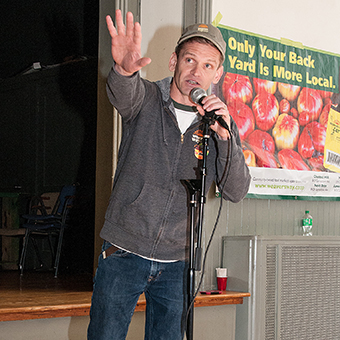 GM Jon Roesser presents the numbers.
GM Jon Roesser presents the numbers.
"Unbelievable!”
That was Weavers Way Board Vice President Josh Bloom’s exclamation as he opened the spring General Membership Meeting on April 29 with word that the Co-op had reached a record 9,300 household members.
But applause gave way to notes of caution as General Manager Jon Roesser laid out the financial and cultural challenges resulting from that very growth.
“I’m very proud and happy that we’ve got that many members,” Roesser told the representatives of more than 100 member households gathered at Summit Church in West Mt. Airy, where Weavers Way was founded more than 40 years ago. But “it is not without its consequences.”
Foremost among those repercussions — though perhaps a short-term one — is a net loss to the entire Co-op of $600,000 in the first six months of the current fiscal year, a period from July 1 until Dec. 31, 2017. The Co-op opened the Ambler store on Oct. 11.
“We expected that this was going to be a difficult six months for us,” Roesser said in his GM report. “You don’t open a brand-new store and not have one-off types of expenses associated with opening up that store. And we certainly did.”
Those non-recurring costs included initial inventory, new hiring, and marketing and advertising to tout the third store location. “So we knew that we were going to be losing money in the first six months of the fiscal year, and that’s reflected there.”
But there were additional costs that were not expected. “We had some construction cost overruns that were a little bit higher than we planned for. And it is true that our Ambler store sales did not meet our expectations. They’re good; they’re not great.”
Roesser cited a couple of reasons for less-than-optimum sales in Ambler. For one, some new customers are apparently put off by prices. “There are price perception issues that we’ve had to confront in Ambler, just like we’ve had to confront in Mt. Airy and Chestnut Hill,” he said.
Another factor is competition, especially in the form of a new Whole Foods that opened in nearby Spring House, about 2.5 miles from the Ambler store. Weavers Way Ambler averaged $132,000 in weekly sales in the six-week period following Whole Food’s opening in March, compared to a weekly average of $137,000 prior to the opening.
Neither sales rate is sufficient. “We really do want to get to a point where our weekly sales in Ambler are about $150,000. That’s where we need to be for long-term sustainability.”
“I must admit to being a little personally disappointed, because I thought we were just going to kill it.”
Looking beyond the ledger, Roesser candidly admitted that the opening of Weavers Way Ambler has brought a series of non-financial challenges that continue to test him, his staff and the membership as a whole. For example, he said, there’s the pure administrative challenge of a membership base that seems to be headed toward an astounding 10,000 households after floating around 5,400 for a number of years.
Then there’s the challenge of educating the Ambler area about the nature of a co-op. “The community has, generally speaking, embraced the store,” he said. “But one of the issues we’ve run into is that a lot of people are unfamiliar with what co-ops are. So that big banner that we have up that says ‘Grocery Store’ is essentially to try to get the word out that this is what we do — we sell groceries. It’s a work in progress, but I think we are making progress.”
Perhaps the greatest non-financial challenge generated by the Ambler opening is the Co-op’s ability — amid rising membership — to give members opportunities to participate, and to maintain its core goals and identity.
“Culturally speaking, we have to be careful about having thousands and thousands of members who perhaps don’t feel engaged at the Co-op,” Roesser said. “This is a challenge of ours: As we grow, how do we make sure that all of our members feel as engaged as the people in this room?”
“So I think this is something that Weavers Way needs to figure out.”
In other GMM news:
- Laura Siena and Kathleen Casey gave an update on Phase II of the Co-op’s Member Loan program, which kicks off May 4 with the goal of raising $400,000 in capital. “The last loan campaign was specifically to build the Ambler store,” Siena said. “But now we really do want to strengthen our financial situation. We’d frankly rather owe money to our members than to banks.” The funds will be used to pay down existing commercial debt and provide flexibility for further growth.
Under Phase II, members can loan $1,000 or more and receive 4% simple interest after six years. Siena hopes this campaign, which cuts off June 21, is as successful as the first, which had a goal of $800,000 but took in $1.5 million. “This is maybe not as sexy and as exciting as opening a new store. But it is about the very fundamental financial strength of our Co-op. And that’s why we feel so keenly about moving forward with this phase.” - Roesser announced that the Co-op’s next major capital expense will involve upgrades to the Chestnut Hill store, which opened in 2010. “If you’ve been in our Chestnut Hill store lately, you might have noticed it looks a little banged up,” he said. “When you do $12.5 million in annual sales in a building that small, it gets banged up. So we really do want to start preparing for the capital expenses associated with an upgrade of the Chestnut Hill store.”
- Sales at Mt. Airy Weavers Way were up nearly 1% since Jan. 1, but sales at the Chestnut Hill store were down 2%, a decline Roesser attributed to the migration of suburban shoppers from Chestnut Hill to Ambler.
- In response to a question about the difficulty in locating staples like bread and meat at the Ambler store, Roesser explained the philosophy of the store’s layout. “We were sold on the concept of what’s called a ‘power alley.’ This is a grocery-store concept where you walk in, and you are immediately presented with the most exciting parts of the store,” such as produce, deli and prepared foods.” But Roesser admitted the design creates a choke point that leaves it difficult to find the bread and meat departments. “We haven’t discussed changing the layout of the store, but perhaps at some point we will.”
- Asked about the success of the new policy that gives new members ‘working’ status — and thus the 5% discount — for their first four months, even before they have worked their cooperator hours, Roesser said it was too soon to say. “I would say that maybe by the fall we’ll have some good data to show the fall-off rate — how many [new members] decided not to do the working member hours and lose that discount after four months.”
- A member asked Roesser about talk of concern among some staffers about job security and resulting departures of staffers. “Our turnover is generally speaking pretty good when you compare us to other retailers,” he said. “Any colleagues who have concerns about the stability of their employment, I would encourage them to talk to me. I don’t see reason why any staff member today should feel anxious about their job security.”
- Roesser also fielded questions about Weavers Way Mercantile, at 542 Carpenter Lane in Mt. Airy, which closed after New Year’s. The GM said it was a less-than-profitable venture. “Other than the period from Thanksgiving through the end of the year, it didn’t make a whole lot of revenue.” And he sounded doubtful that the Mercantile would return. “Anyone who’s been in there I think would agree it is an awfully cool space. But it is also very problematic.” Problems with the building, a former auto repair shop, include lack of a second exit, no HVAC, a toilet but no sink, and — underground — old storage tanks with contaminated soil that would have to be removed. “So to do anything with the building on our own would require a tremendous amount of investment that we’re simply going to be able to do anytime in the near future.”





